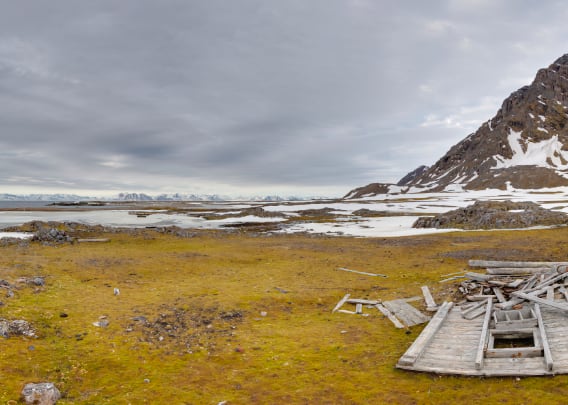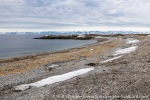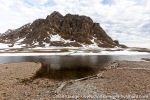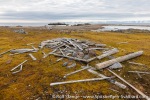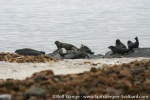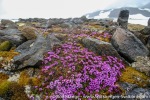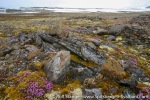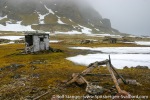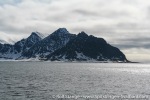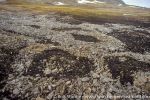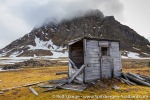-
current
recommendations- Liefdefjord
New page dedicated to one of Spitsbergen's most beautiful fjords. Background information and many photos.
- New Spitsbergen guidebook
The new edition of my Spitsbergen guidebook is out and available now!
- Liefdefjord
New page dedicated to one of Spitsbergen's most beautiful fjords. Background information and many photos.
Page Structure
-
Spitsbergen-News
- Select Month
- May 2025
- April 2025
- March 2025
- February 2025
- January 2025
- December 2024
- November 2024
- October 2024
- September 2024
- August 2024
- July 2024
- June 2024
- May 2024
- April 2024
- March 2024
- February 2024
- January 2024
- December 2023
- November 2023
- October 2023
- September 2023
- August 2023
- July 2023
- June 2023
- May 2023
- April 2023
- March 2023
- February 2023
- January 2023
- December 2022
- November 2022
- October 2022
- September 2022
- August 2022
- July 2022
- June 2022
- May 2022
- April 2022
- March 2022
- February 2022
- January 2022
- December 2021
- November 2021
- October 2021
- September 2021
- August 2021
- July 2021
- June 2021
- May 2021
- April 2021
- March 2021
- February 2021
- January 2021
- December 2020
- November 2020
- October 2020
- September 2020
- August 2020
- July 2020
- June 2020
- May 2020
- April 2020
- March 2020
- February 2020
- January 2020
- December 2019
- November 2019
- October 2019
- September 2019
- August 2019
- July 2019
- June 2019
- May 2019
- April 2019
- March 2019
- February 2019
- January 2019
- December 2018
- November 2018
- October 2018
- September 2018
- August 2018
- July 2018
- June 2018
- May 2018
- April 2018
- March 2018
- February 2018
- January 2018
- December 2017
- November 2017
- October 2017
- September 2017
- August 2017
- July 2017
- June 2017
- May 2017
- April 2017
- March 2017
- February 2017
- January 2017
- December 2016
- November 2016
- October 2016
- September 2016
- August 2016
- July 2016
- June 2016
- May 2016
- April 2016
- March 2016
- February 2016
- January 2016
- December 2015
- November 2015
- October 2015
- September 2015
- August 2015
- July 2015
- June 2015
- May 2015
- April 2015
- March 2015
- February 2015
- January 2015
- December 2014
- November 2014
- October 2014
- September 2014
- August 2014
- July 2014
- June 2014
- May 2014
- April 2014
- March 2014
- February 2014
- January 2014
- December 2013
- November 2013
- October 2013
- September 2013
- August 2013
- July 2013
- June 2013
- May 2013
- April 2013
- March 2013
- February 2013
- January 2013
- December 2012
- November 2012
- October 2012
- September 2012
- August 2012
- July 2012
- June 2012
- May 2012
- April 2012
- March 2012
- February 2012
- January 2012
- December 2011
- November 2011
- October 2011
- September 2011
- August 2011
- May 2011
- April 2011
- March 2011
- February 2011
- January 2011
- December 2010
- November 2010
- September 2010
- August 2010
- July 2010
- June 2010
- May 2010
- April 2010
- March 2010
- February 2010
- November 2009
- October 2009
- August 2009
- July 2009
- June 2009
- May 2009
- April 2009
- March 2009
- February 2009
- January 2009
- December 2008
- November 2008
- October 2008
- August 2008
- July 2008
- June 2008
- May 2008
- April 2008
- March 2008
- February 2008
- April 2000
- Select Month
-
weather information
-
Newsletter

| Guidebook: Spitsbergen-Svalbard |
Fuglehuken
Pearl of arctic nature on Prins Karls Forland
Fuglehuken is the northern point of Prins Karls Forland, the long, narrow island off Spitsbergen’s west coast between Isfjord and Kongsfjord.
At Fuglehuken, you get kind of the whole ecology of Spitsbergen in a nutshell, within a few kilometres.
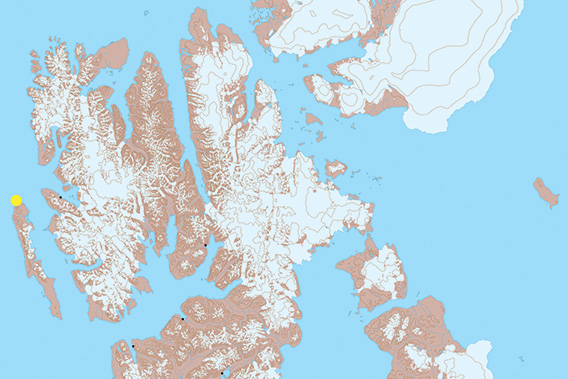
Glaciers and permafrost
Start with the fact that this part of the west coast is the part of the whole archipelago where the West Spitsbergen current (the northernmost branch of the gulf stream) has its strongest regional influence. Strong winds are frequent in the area, and they bring moisture and precipitation, which again is responsible for the very strong glaciation of a part of the east coast of the mountainous central part of Prins Karls Forland. The north tip of the island, around Fuglehuken, is, however, unglaciated. But there is a large number of well developed rock glaciers, large tongues of debris flowing down from steep hillsides into the flat tundra (“creeping permafrost”).
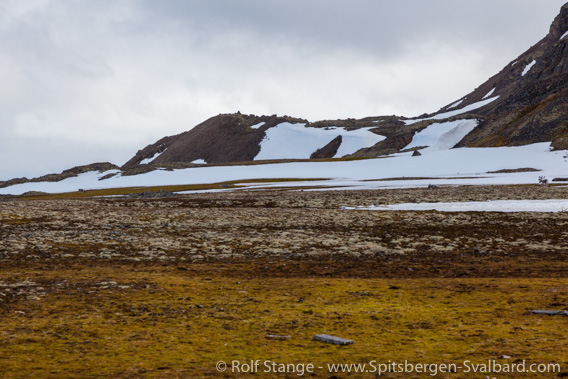
Rock glacier (the debris tongue in the background that flows into the lowland)
near Fuglehuken, Prins Karls Forland.
Seabird colonies, tundra und reindeer
Higher up on the mountain slopes, there are Brünich’s guillemots and kittiwakes breeding in large numbers during the season. Additionally, there are puffins (in far smaller numbers) and even a few breeding pairs of razorbills, a species that is usually not at home in the high Arctic.
The seabird colonies are responsible for regular fertilisation of the coastal plain, which makes the tundra relatively green and lush. In some places organic matter has accumulated during thousands of years, forming bog-like top layers that can be more than a metre thick.
- pano anchor link: #220531e_Fuglehuken_054HDR
It does not surprise that reindeer can be found in abundance in an area with such rich tundra, as well as arctic foxes which like to have their dens in the vicinity of birdcliffs.

Reindeer enjoying summer life on the tundra near Fuglehuken.
The coastline consists of some small bays alternating with rocky points. The coast is quite exposed and the shallow waters require ships to keep a good distance. Hence, landings are only possible during calm and stable conditions.

Coastline near Fuglehuken: small bays, but no real shelter.
The harbour seals don’t care about sheltered waters. They like to rest on rocks near the coast that fall dry during low tide.
Willem Barentsz, whalers and trappers
It was somewhere in this area, the northern west coast of Spitsbergen, that Willem Barentsz discovered the island in June 1596. He called the north tip of Prins Karls Forland “Vogelhoek” (“bird point”), a name that was later “Norwegianised” and turned into “Fuglehuken”. This name is one of Spitsbergen’s oldest placenames and one of very few that can be traced all the way back to Barentsz.
The whalers used the area during the 17th century. A little whaling station to process whale oil is known from Engelskbukta on the mainland coast not far away. No such station is known from Prins Karls Forland, but there is a graveyard from those times near Fuglehuken.
Later, trappers tried to harvest the area’s rich wildlife, but Prins Karls Forland never became a traditional, heavily used hunting area. Huts were built in the early 20th century, including one near Fuglehuken which was built in 1929. It was a ruin in 2009, but as such, still standing (see picture in the last line of the gallery below. The images come in alphabetical order, which is not chronological). In 2022, it was completely collapsed.
- pano anchor link: #220531e_Fuglehuken_062-2HDR
Today, there is a little navigation beacon on the northernmost tip of Prins Karls Forland.
Fuglehuken is a pearl of nature, but not easily accessible. Consider it a privilege if you have ever managed to actually visit this beautiful place. It is a present that nature does not make too often.
Fuglehuken photo gallery
To round it off, some impressions from the Fuglehuken area.
- gallery anchor link: #gallery_2279
Click on thumbnail to open an enlarged version of the specific photo.
BOOKS, CALENDAR, POSTCARDS AND MORE
This and other publishing products of the Spitsbergen publishing house in the Spitsbergen-Shop.
last modification: 2022-06-19 ·
copyright: Rolf Stange

